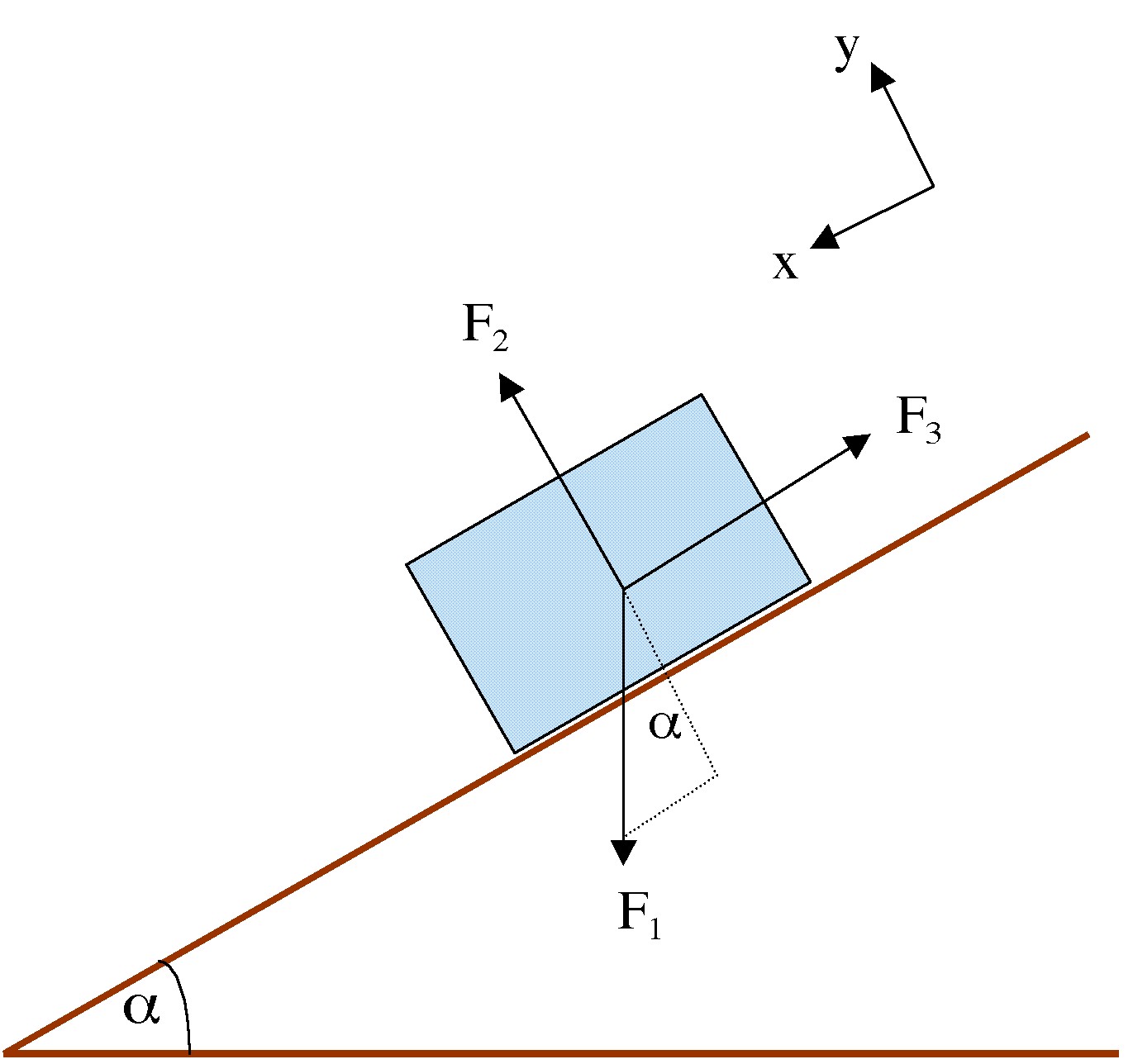Assumptions:
- No friction
- a= 0
FBD of an Equilibium
In this type of equilibrium, all the forces cancel out each other therefore there is no acceleration present.
For this type of equilibrium questions, it can be solved using a method very similar to vector components.
Inclines:
There are two types of Incline questions, kinetic and friction.
Kinetic:
In most of the kinetic incline questions we've studied, the mass is either sliding down or moving up. This gives it an acceleration. There is no Y acceleration because the object is not moving up and down as it slides on the incline plane.
assumptions:
Assumptions
- fk = µkFn
- aₓ ≠ 0, ay = 0
- +ve in the direction of a
- +ve in the direction of a
- no air resistance

The important thing to remember for this type of questions is to break mg into its x and y component. Because we know that there is no Y acceleration, therefore FN=mgy. For X, there are a couple of things that we need to take into consideration of. There are friction, and force gx, sometimes force applied. Fxnet = Fgx-Ff
Friction:
For friction questions, the mass is staying still, which means that a = 0.
Assumptions
- fs = µFn
- a = 0
- +ve axes in the direction of decline
- no air resistance
- no air resistance

The trick to this question is that the acceleration equals to zero, which sort of resembles equilibrium except with friction. You would have to split the mg into its x and y component just like the kinetic problems. Fn - Fgy = 0, Ff-Fgx=0
Pulleys:
Assumptions
- frictionless pulleys + rope
- no air resistance
- multiple FBDs
- +ve in the direction of a
- T1 = T2
- a of the system is the same



The kind of pulleys we have studied is fixed to a frame. The trick to remember for this question is that the tension between the two strings are the same. Therefore, if we find the equation for tension for both of the strings, we can set them equal to each other and find the missing variable.
Trains:
Bacially, it's pulleys, but sideways.
Assumptions
- fk = µkFn
- aₓ ≠ 0, ay = 0
- +ve in the direction of a
- +ve in the direction of a
- no air resistance

The yellow blocks are in a train system while the blue is in a pulley system.
The acceleration in a train system is always assumed to be the same between the masses.
No comments:
Post a Comment